Television as Art: NSU Art Museum presents the unexpected connection
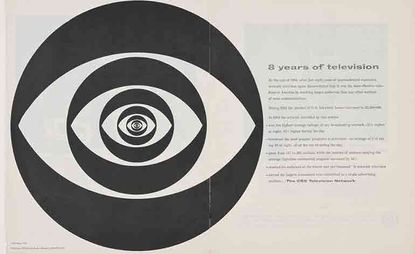
Television and art are not often regarded as being remotely in the same league, but the NSU Art Museum in Fort Lauderdale, Florida is proving the influence that avant-garde art had on television in its nascent years. Organised together with the Jewish Museum in New York and the Center for Art, Design and Visual Culture at the University of Maryland, Baltimore County, ‘Revolution of the Eye: Modern Art and the Birth of American Television’ pulls together two cherished pillars of American culture.
Spanning the late 1940s to the mid 1970s, the exhibition presents how American television took on a modernist aesthetic as its inspiration. Over 250 fine art objects and examples of graphic design, including works from artists such as Marcel Duchamp, Saul Bass, Roy Lichtenstein and Georgia O’ Keeffe, stand alongside television memorabilia, clips and ephemera from iconic television series and shows, such as The Ernie Kovacs Show, The Ed Sullivan Show, Rowan and Martin’s Laugh-In and even The Twilight Zone. From the Pop Art aesthetics reflected in early Batman epsiodes to Op Art-esque commercials for Kodak and sets for The Ed Sullivan Show, the connections are rather unexpected, to say the least.
In addition to a showing of early advertising, which still exude an exciting quality and were revolutionary at the time, the exhibition also highlights the ‘New Advertising’ revolution of the 1950s and 1960s, where Andy Warhol and Ben Shahn created advertising and commercial campaigns for CBS.
And finally, to prove just how entwined television and art were in popular culture, the exhibition also documents how artists like Salvador Dali, Willem de Kooning, Ray Eames and Marcel Duchamp became household names, thanks to television appearances that were broadcast nationwide. A series of rare TV clips forms part of the experience.
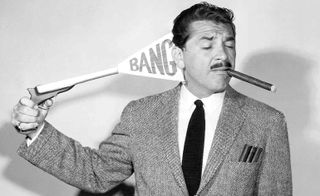
Over 250 fine art objects and examples of graphic design stand alongside television memorabilia, clips and ephemera from iconic films and television shows, such as The Ernie Kovacs Show. Pictured: Ernie Kovacs. Image provided by Photofest, New York
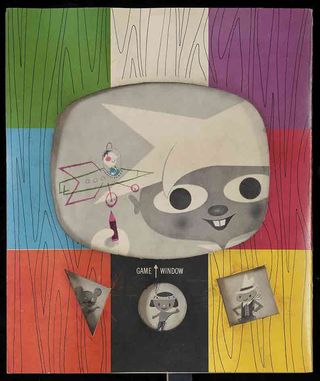
Spanning the late 1940s to the mid 1970s, the exhibition presents how American television took on a modernist aesthetic as its inspiration. Pictured: 'Winky Dink and You' game book, c. 1954
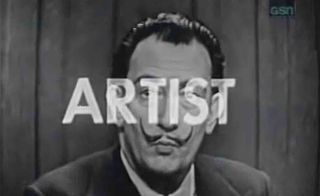
The exhibition also includes rare film clips showing how artists, like Salvador Dali, became household names, thanks to television appearances that were broadcast nationwide. Pictured: Salvador Dali on 'What's My Line', CBS, January 1952. Copyright: Fremantle Media
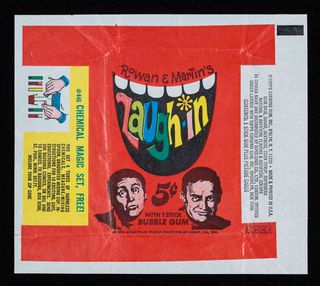
Pictured: Rowan and Martin's Laugh-In bubble-gum wrapper, c. 1968
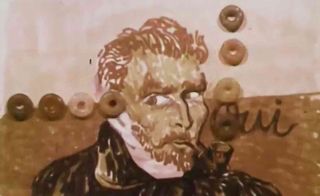
Pictured: Lifesavers commercial, 1966
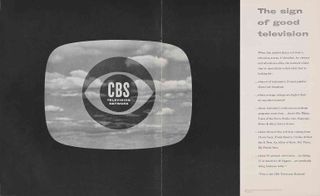
The exhibition also includes examples of early advertising, which still exude an exciting quality and were considered revolutionary at the time. Pictured: William Golden, Art Director, 'The Sign of Good Television,' Fortune, December 1951
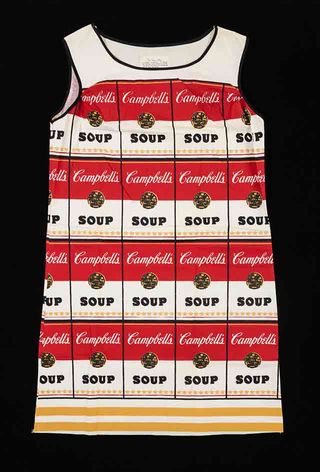
It also highlights the ‘New Advertising’ revolution of the 1950s and 1960s, where Andy Warhol and Ben Shahn created advertising and commercial campaigns for CBS. Pictured: Designer unknown, The Souper Dress, c. 1967
INFORMATION
‘Revolution of the Eye: Modern Art and the Birth of American Television’ runs until 10 January 2016
ADDRESS
NSU Art Museum Fort Lauderdale
1 East Las Olas Boulevard
Fort Lauderdale, Florida
Wallpaper* Newsletter
Receive our daily digest of inspiration, escapism and design stories from around the world direct to your inbox
Pei-Ru Keh is a former US Editor at Wallpaper*. Born and raised in Singapore, she has been a New Yorker since 2013. Pei-Ru held various titles at Wallpaper* between 2007 and 2023. She reports on design, tech, art, architecture, fashion, beauty and lifestyle happenings in the United States, both in print and digitally. Pei-Ru took a key role in championing diversity and representation within Wallpaper's content pillars, actively seeking out stories that reflect a wide range of perspectives. She lives in Brooklyn with her husband and two children, and is currently learning how to drive.
-
 Serenade your senses at Farasha Farmhouse in Marrakech
Serenade your senses at Farasha Farmhouse in MarrakechFarasha Farmhouse is a serene escape hidden on the outer reaches of Marrakech
By Nicola Chilton Published
-
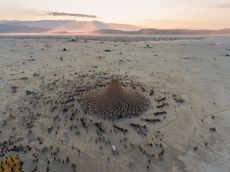 ‘Bio-spaces’ exhibition at Roca London Gallery celebrates biophilic design
‘Bio-spaces’ exhibition at Roca London Gallery celebrates biophilic design‘Bio-Spaces: regenerative, resilient futures’ opens at the Roca London Gallery as ‘a call to action to stop designing nature out’
By Clare Dowdy Published
-
 Les Lalanne’s surreal world takes over Venice
Les Lalanne’s surreal world takes over Venice‘Planète Lalanne’, presented by Ben Brown Fine Arts, takes over Palazzo Rota Ivancich, with a cast of blue hippos, woolly sheep and giant grasshoppers
By Hannah Silver Published
-
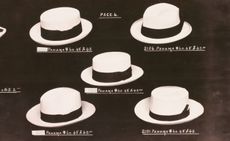 The Met’s ‘The Real Thing: Unpacking Product Photography’ dissects the avant-garde in early advertising
The Met’s ‘The Real Thing: Unpacking Product Photography’ dissects the avant-garde in early advertisingA new exhibition at The Metropolitan Museum of Art in New York explores the role of product photography and advertising in shaping the visual language of modernism
By Zoe Whitfield Published
-
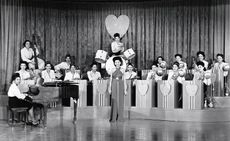 Detroit Institute of Arts celebrates Black cinema
Detroit Institute of Arts celebrates Black cinema‘Regeneration: Black Cinema 1898-1971’ at the Detroit Institute of Arts (DIA) brings lost or forgotten films, filmmakers and performers to a contemporary audience
By Anne Soward Published
-
 BLUM marks 30 years of Japanese contemporary art in America
BLUM marks 30 years of Japanese contemporary art in AmericaBLUM will take ‘Thirty Years: Written with a Splash of Blood’ to its New York space in September 2024, continuing its celebration of Japanese contemporary art in America
By Timothy Anscombe-Bell Published
-
 Todd Gray’s sculptural photography collages defy dimension, linearity and narrative
Todd Gray’s sculptural photography collages defy dimension, linearity and narrativeIn Todd Gray’s New York exhibition, he revisits his 40-year archive, fragmented into elaborated frames that open doors for new readings
By Osman Can Yerebakan Published
-
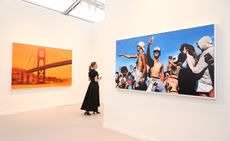 Frieze LA 2024 guide: the art, gossip and buzz
Frieze LA 2024 guide: the art, gossip and buzzOur Frieze LA 2024 guide includes everything you need to know and see in and around the fair
By Renée Reizman Published
-
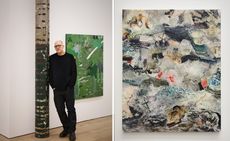 New York artist Christopher Astley showcases an alternative natural world
New York artist Christopher Astley showcases an alternative natural worldAt Martos Gallery in New York, Christopher Astley’s paintings evoke an alternative natural world and the chaos of warfare (until 16 March 2024)
By Tianna Williams Published
-
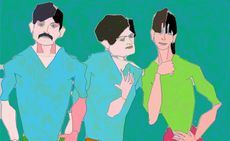 The Whitney plots Harold Cohen’s artistic AI adventures
The Whitney plots Harold Cohen’s artistic AI adventures‘Harold Cohen: AARON’, at the Whitney Museum of American Art celebrates the artist’s software – the earliest AI program for artmaking – as an artwork in its own right
By Hannah Silver Published
-
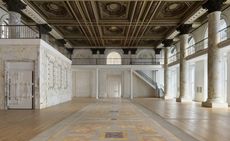 Sneak peek: inside Jack Shainman’s vast New York gallery
Sneak peek: inside Jack Shainman’s vast New York galleryJack Shainman’s new gallery space opens with ‘Broken Spectre’, a new film by Irish artist Richard Mosse
By Mary Cleary Published